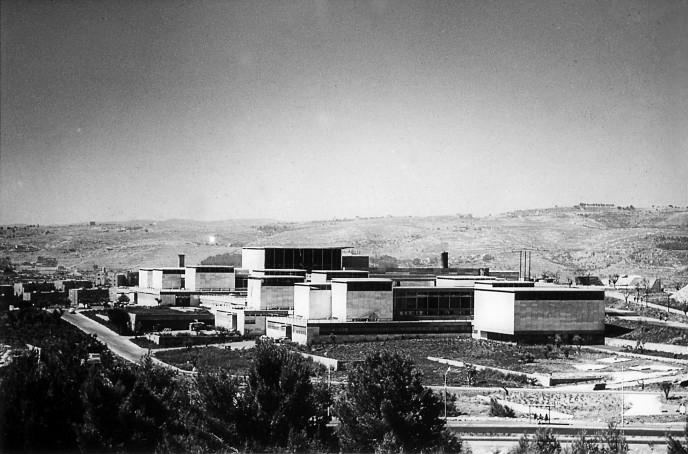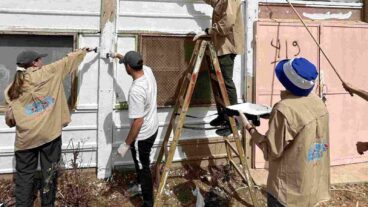The state of Israel was only 17 years old when its political and cultural hoi-polloi came to a windswept hilltop in Jerusalem to celebrate the opening of the Israel Museum on May 11, 1965.
Another string of galas kicked off the $100 million renewal of the museum campus in July 2010, and now there is no less excitement afoot for the institution’s 50th anniversary year.
At a press conference on February 9, milky archival footage of the museum’s opening and its early years preceded a spirited presentation by museum director James S. Snyder, who arrived in 1997 after a long tenure at New York’s Metropolitan Museum of Art. He announced a year-long program devoted to an exploration of Israel’s aesthetic culture in the 50 years before and after its founding.
Here are some of the remarkable stats Snyder shared about the largest cultural institution in Israel:
* There are 500,000 objects in the Israel Museum’s collections. The oldest piece is a female figurine from 250,000 years ago. The newest are contemporary artworks in many media.
* The Israel Museum sits on 20 acres and has 200,000 square feet of exhibition space in which 7,000 objects are on display at any given time.
* During the last five years, annual visitors have numbered between 750,000 and 1 million, evenly divided among Jerusalemites, other Israelis and foreigners.
* The museum has a donor base in 16 countries and operates on a $30 million annual budget.
* Exhibitions travel from the Israel Museum all over the world. Over the past year there were six exhibitions on three continents. A new exhibition just opened in Washington, DC, and another is set for Vienna.
* 2013’s ambitious “Herod the Great” exhibition drew a record half-million visitors, even though “people don’t like archeology so much,” Snyder confided.
* In March 2013, US President Obama visited the museum during a 46-hour trip to Israel. (He confided to Snyder that he had never visited the National Gallery in Washington DC.) Bono, Barbra Streisand and Naomi Campbell are among other celebrities to have visited in recent years.
During the 50th anniversary year, the museum will highlight local, national and universal works of art. “What perhaps makes us unique among museums is that we begin with a local narrative, but it’s a local narrative that resonates through history,” says Snyder.
Museum staff gave tours of the newest exhibition, “6 Artists, 6 Projects” (February 10 – August 29, 2015) featuring leading contemporary Israeli artists.
“1965 Today” (March 31 – August 29, 2015) will immerse visitors in the visual character of Israel during the mid-1960s. Complementary exhibitions will focus on early film and photographic imagery from that era.
“A Brief History of Humankind” (May 1 – December 26, 2015) will present 12 seminal objects — from the first evidence of communal fire nearly 800,000 years ago, to early depictions of gods and goddesses, to the earliest evidence of writing, and finally to Albert Einstein’s original manuscript for the special theory of relativity.
“Twilight over Berlin” (September 27, 2015 – January 30, 2016) will include 50 German masterworks from the first half of the 20th century. This exhibition coincides with the 50th year of diplomatic relations between Germany and Israel.

In the museum’s Shrine of the Book, which opened in April 1965 and houses the first-century BCE Dead Sea Scrolls, the oldest extant biblical texts, there will be the first-ever showing of the world’s smallest Hebrew Bible, the Nano Bible created in 2014 by the Russell Berrie Nanotechnology Institute of the Technion-Israel Institute of Technology.
The Youth Wing for Art Education will host a “Happy Birthday” exhibition from May 11 through December 26.
Snyder announced that all visitors born on May 11, 1965 will receive a life membership to the Israel Museum. Everyone will be admitted for free on May 11, 2015.

















